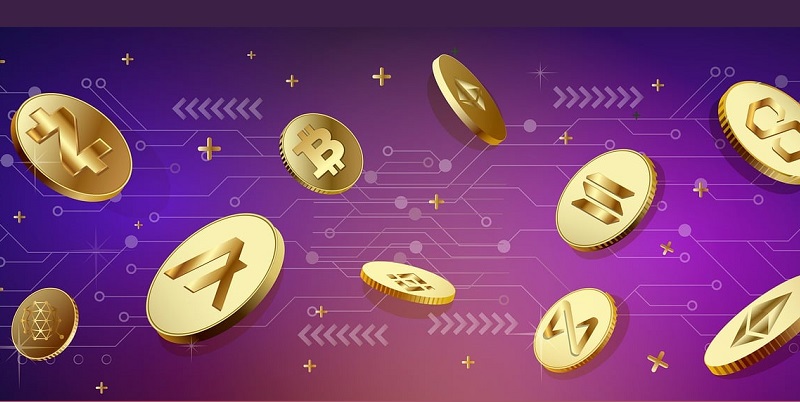Cryptocurrencies have revolutionized the financial landscape, and at the forefront of this digital revolution is Bitcoin. However, Bitcoin is not the only player in the game, numerous other digital currencies, known as altcoins, have emerged, each with their own unique features and capabilities. Altcoins are cryptocurrencies that are based on blockchain technology, just like Bitcoin, but they offer distinct advantages and purposes. In this article, we will delve into the world of altcoins, understanding their relationship with Bitcoin, their distinctive features, categories, and the potential benefits of diversifying our cryptocurrency portfolios.
Volatility and challenges of altcoins
As with any investment, altcoins come with their fair share of risks and challenges. This is particularly evident during periods of market volatility, where altcoin prices can fluctuate dramatically. While some investors see this volatility as an opportunity for substantial gains, it also poses the risk of significant losses. Therefore, cautious and informed decision-making is crucial when investing in altcoins.
Distinctive features of altcoins
One of the key aspects that differentiate altcoins from Bitcoin and other cryptocurrencies is the unique features provided by their developers. These features may include enhanced transaction speed, reduced transaction costs, improved energy efficiency, or additional functionalities that cater to specific use cases. For instance, the Stellar blockchain stands out with its focus on faster transactions, lower fees, and greater energy efficiency compared to Bitcoin and other cryptocurrencies. These distinctive features make altcoins attractive for those seeking alternatives to traditional financial systems or looking for specific functionalities that Bitcoin may not offer.
Categories of altcoins
Altcoins can be classified into various categories based on their purpose and functionality. Utility tokens, which are commonly used in decentralized applications (DApps), provide access to specific services or products within a blockchain network. Security tokens, on the other hand, represent underlying assets such as shares or bonds and are subject to relevant regulations. Stablecoins are designed to minimize price volatility by pegging their value to a real-world asset like a fiat currency or a commodity. Finally, platform-based tokens serve as native currencies within a blockchain platform, enabling transactions and facilitating decentralized applications. These categories demonstrate the versatility and wide-ranging applications of altcoins in the blockchain ecosystem.
The relationship between Bitcoin and altcoins
Bitcoin has enjoyed widespread adoption and recognition as the pioneer of cryptocurrencies, laying a solid foundation for the broader acceptance of altcoins. While altcoins offer features to differentiate themselves, they still rely on the underlying blockchain technology that Bitcoin propelled into the mainstream. This collaborative and harmonious relationship between Bitcoin and altcoins further strengthens the credibility and potential of digital currencies in various applications and industries.
Innovation and Expansion of Blockchain Technology through Altcoins
Altcoins have played a crucial role in driving innovation and expanding the capabilities of blockchain technology. Developers strive to enhance existing features or introduce novel functionalities to address the limitations encountered by Bitcoin or other cryptocurrencies. For instance, altcoins may experiment with new consensus mechanisms, implement additional privacy features, or explore scalability solutions. This constant innovation contributes to the evolution of blockchain technology beyond its initial applications, opening doors to new possibilities.
Diversifying investments with altcoins
Investors looking to diversify their cryptocurrency portfolios can consider both Bitcoin and carefully selected altcoins. While Bitcoin offers stability and prominence in the market, altcoins can provide opportunities for greater investment returns, provided thorough research and evaluation is conducted. By strategically allocating funds to altcoins, investors can reduce risk by spreading out their investments across different assets and take advantage of specific features offered by altcoins that cater to their individual investment goals.
Choosing between altcoins and Bitcoin
The decision between investing in altcoins or sticking to Bitcoin ultimately depends on individual needs and preferences. While some may find the stability and brand recognition of Bitcoin appealing, others may be drawn to the unique features and potential growth of altcoins. Importantly, both altcoins and Bitcoin can coexist harmoniously due to their different purposes and functionalities. Rather than viewing altcoins as competitors, they should be seen as contributors to the overall growth and adoption of cryptocurrencies, pushing the boundaries of blockchain technology.
Altcoins have emerged as a diverse and dynamic ecosystem within the realm of cryptocurrencies. They reinforce the foundations laid by Bitcoin, offering distinctive features, driving innovation, and expanding the capabilities of blockchain technology. While altcoins come with inherent risks, investors can benefit from diversifying their portfolios by considering a range of altcoins alongside Bitcoin. By carefully researching and selecting altcoins that align with their investment objectives, individuals can seize the potential opportunities hidden within this evolving digital landscape. Ultimately, the choice between altcoins and Bitcoin depends on individual preferences and goals, and both can coexist and thrive, ushering in a new era of decentralized finance and technological advancement.

